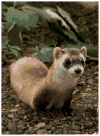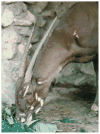Lessons from biodiversity--the value of nontraditional species to advance reproductive science, conservation, and human health
- PMID: 19967718
- PMCID: PMC3929270
- DOI: 10.1002/mrd.21137
Lessons from biodiversity--the value of nontraditional species to advance reproductive science, conservation, and human health
Abstract
Reproduction is quintessential to species survival. But what is underappreciated for this discipline is the wondrous array of reproductive mechanisms among species- variations as diverse as the morphology of the species themselves (more than 55,000 vertebrate and 1.1 million invertebrate types). We have investigated only a tiny fraction of these species in reproductive science. Besides the need to fill enormous gaps in a scholarly database, this knowledge has value for recovering and genetically managing rare species as well as addressing certain reproductive issues in humans. This article provides examples, first to advise against oversimplifying reproduction and then to show how such knowledge can have practical use for managing whole animals, populations, or even saving an entire species. We also address the expected challenges and opportunities that could lead to creative shifts in philosophy and effective actions to benefit more species as well as a future generation of reproductive scientists.
Figures




References
-
- Albert AYK, Schluter D. Selection and the origin of species. Curr Biol. 2005;15:R283–R288. - PubMed
-
- Allen CD, Burridge M, Mulhall S, Chafer ML, Nicolson VN, Pyne M, Zee YP, Jago SC, Lundie-Jenkins G, Holt WV, Carrick FN, Curlew JD, Lisle AT, Johnston SD. Successful artificial insemination in the koala (Phascolarctos cinereus) using extended and extended-chilled semen collected by electrojaculation. Biol Reprod. 2008;78:661–666. - PubMed
-
- Anderson M. Sexual selection. Princeton: Princeton University Press; 1994. p. 624.
-
- Asa CS, Bauman JE, Coonan TJ, Gray MM. Evidence for induced estrus or ovulation in a canid, the island fox (Urocyon littoralis) J Mammal. 2007;88:436–440.
-
- Aupperle H, Reischauer A, Bach F, Hildebrandt T, Goritz F, Jager K, Scheller R, Klaue HJ, Schoon HA. Chronic endometritis in an Asian elephant (Elephas maximus) J Zoo Wildl Med. 2008;39:107–110. - PubMed
Publication types
MeSH terms
Grants and funding
LinkOut - more resources
Full Text Sources

